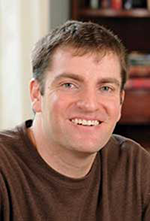Environmental Group: Con Ed Ignoring Tree Cutting Guidelines
By Martin Wilbur
A group that has been highly critical of Con Edison’s vegetation management practices near transmission lines recently charged that the utility is ignoring revised operating procedures adopted by the Public Service Commission.
During the past two weeks, the Greenburgh Environmental Forum’s LORAX Working Group has accused Con Edison of disregarding the new notification procedures and a modified “tiered” management approach, which allows for certain species that are no threat to the wires to remain within the right of way.
The new guidelines were adopted earlier this year by the PSC and were supposed to go into effect in July following countywide outcry against the clear cutting that occurred in 2009 near the transmission lines from Yonkers and extending north into Putnam and Dutchess counties. Some of the hardest hit Westchester communities included Greenburgh, Mount Pleasant, Pleasantville and Yorktown.
Mark Gilliland, chairman of the LORAX Working Group, said reports from residents and property owners in southern Westchester, where Con Edison last month resumed work and will be progressing north in the coming months, highlighted that there have been no changes in the utility’s vegetation management practices.
“They are effectively ignoring the intent of these guidelines but part of the problem is there appears to be a very friendly relationship between the utilities and the regulators,” Gilliland said.
However, a Con Edison spokesman said the utility is complying with PSC regulations. Allan Drury said the guidelines state that the changes are required only for new work that starts after July 15. This summer Con Edison is revisiting old work that was started in 2009; therefore, it is not subject to follow the revised guidelines, he said.
“The vegetation management program is about safety and reliability,” Drury said. “While we understand that people do not like to lose trees, they’d feel even worse if they lost power. No one, including those of us at Con Edison, wants to see anyone tampering with the beauty and clean air provided by trees throughout the county. But electric reliability is important, too.”
Another LORAX member, Patricia Podolak, who has experienced clear cutting near her Yorktown home since 2005, said even the new PSC guidelines are too vague and weak to be effective. However, for Con Edison to try to justify their actions during the past few weeks calls the utility’s ethics into question, she said.
“Under the circumstances, one would think that the appropriate thing to do would be to not continue to operate in the same manner and not revert to the past, but instead make necessary revisions and go forward with that and comply with the intent of the recommendations,” Podolak said. “Not Con Edison. They want to continue to function as they have in the past and continue to practice their problematic vegetation management practices.”
Meanwhile, one state legislator has already introduced a bill to better protect municipalities while another said last week that tougher legislation is probably needed to protect the public from utilities who aggressively clear cut trees.
State Sen. Andrea Stewart-Cousins has proposed a measure that would require utilities engaging in vegetation management to notify municipalities where the work is taking place at least 60 days in advance. A public hearing would also have to be held at least 30 days before work commences.
If the utility fails to comply, it would be fined $5,000 for the first offense and $10,000 for two or more violations within a five-year period.
Assemblyman Thomas Abinanti said Stewart-Cousins’ bill is a first step but he is considering tougher legislation to prevent rein in the utilities. He also said the PSC has failed in its job as regulators.
In 2005, the Federal Energy Regulatory Commission required utilities to cut vegetation near transmission lines to avoid a repeat of the August 2003 blackout that plunged much of the Northeast into darkness. That power outage was caused by a tree limb coming into contact with power lines in Ohio.

Adam has worked in the local news industry for the past two decades in Westchester County and the broader Hudson Valley. Read more from Adam’s author bio here.
